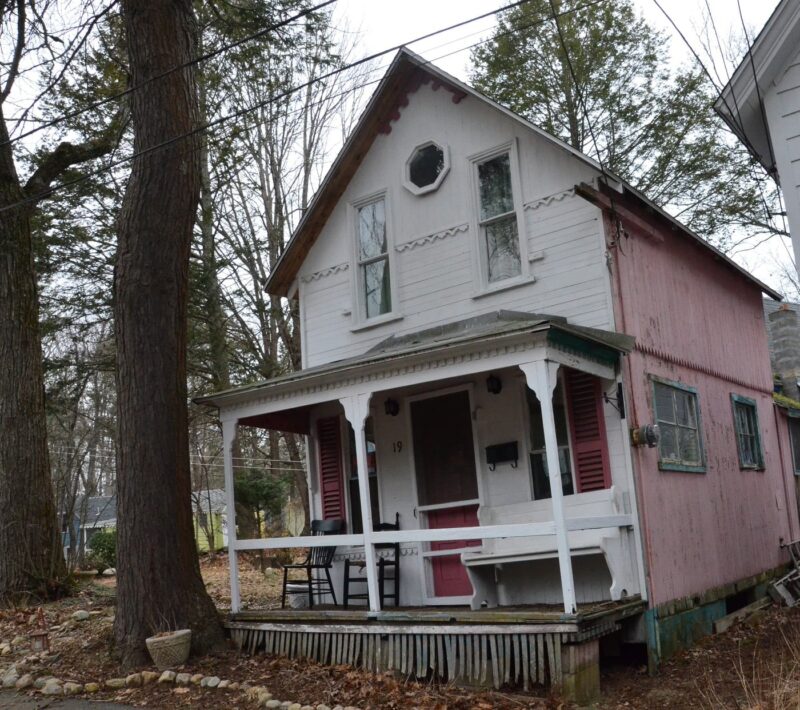In April of 2022, my wife Nicky and I purchased a cottage built in the 1870s. Since our marriage, we had talked about owning a place of retreat. A place where we could go and unplug even for a weekend. We searched for several years and could not find the right place until we stumbled across what we now call “Love Shack.” My father-in-law gave the name to this run-down, long-forgotten, sad little place because of the amount of love needed to restore this simple cottage.
The cottage is part of the Asbury Grove Camp Meeting Association in Hamilton, Massachusetts. The Camp was founded a few decades before the construction of our cottage as a retreat for church folk. A place of sanctuary from the everyday cares of life. A place of spirituality and rest for a couple of weeks each year.
Originally the “Grove” was a collection of tents scattered amongst the pine trees. Eventually, those tents were put on platforms, and those platforms became the foundations of what would become more than 300 Victorian cottages, of which many still exist today like ours.
So that is the back story, but how does spirituality play into all of this?
For starters, the cottage was built by people of faith. The builders of our cottage were coming to “The Grove” to retreat from their daily lives and to attend worship services and communal meals. The cottages were built without cooking facilities as all meals were communal. The residents of “The Grove” would sit together and break bread. They would feed each other spiritually and physically. They worked together to build their cottages and that of their neighbors with minimal machinery other than their hands.
There is a connectedness between work and prayer. The 5th Century monastic founder and writer Benedict of Nursia wrote a rule of life for his monasteries that struck a balance between work and prayer. The Ora et Labora of the day was the idea that prayer is work and that work is prayer. The monks would gather at various intervals during the day, often influenced by the seasons and the rising and the setting of the sun. After the communal prayer, they would gather for a meal. Although they ate in silence, they were together as brothers, where all were equal.
They worked with their hands to till the soil that would provide their food. They cared for animals that would provide milk and other raw materials for clothing and different needs of the monastery. They worked with tools, extensions of their bodies, building places for worship and living as well as the beds they would sleep on and the altar where they would offer communion—all with the sweat of their brow and the work of their hands.
I spent several years in a modern example of a 5th-century monastic community living under the Rule of St. Benedict. There were not as many of us as there had been in those early days, but we still followed the rhythm of the day and practiced the Ora et Labora that divided the day. The work had changed, but we still provided for ourselves, albeit not by tilling the soil.
But I want to take this idea of spirituality and renovation another step.
Just as there is a connectedness between work and prayer, there is a connectedness between all creation. My faith teaches me that God created the world and everything in it. God created the plants and trees, the soil and the water, the animals and humans. We were to live in harmony with one another. God breathed life into all of creation. The Bible tells the story of the creation of humanity and that God fashioned humankind from the dust of creation with God’s own hands. Humanity sprang forth from within creation itself. God animated humanity with God’s own breath God’s Ruach in Hebrew, which in some ways, set us apart from the rest of creation.
We, humans, are connected to creation through our energies, our souls, if you will. All creation has a soul, human and animal, plant and bird, fish, and tree. One might argue that our souls are different, to which I would respond that each soul is unique, just as each plant, animal, and human are unique, but the connectedness remains.
When we first looked at our cottage, I could feel the energy, the soul of the building. Of course, the building has its own energy, but it also shares in the energy or energies of the people who built it and the energy of the parts that went into its construction. Each board, each nail, and even the glass and paint have a created energy, and it is that energy that interacts with my energy as I restore the image that was created long ago.
My Christian faith is about the restoration of the image, the image of humanity that has been scared by our own willfulness and arrogance. Humanity strayed from the creator and creation. Humanity was no longer the caretaker but the taker of creation, taking it for its own purpose. My faith and my spirituality are about restoring my relationship with the creator and restoring harmony between my energy and the energy of creation.
As I peel back each layer and work to repair work done generations before me, I can feel the energy of those who have come before me. In some ways, that energy guides what I do and the decisions we have to make concerning the cottage. We are trying to be respectful of her history and listen to her story.
Our little cottage was all but forgotten when we found her, and we have breathed new life into her. By our love, sweat, and a little blood, she will shine again, and all will be well with her soul.
Follow the progress of our renovation on our Youtube Channel.

